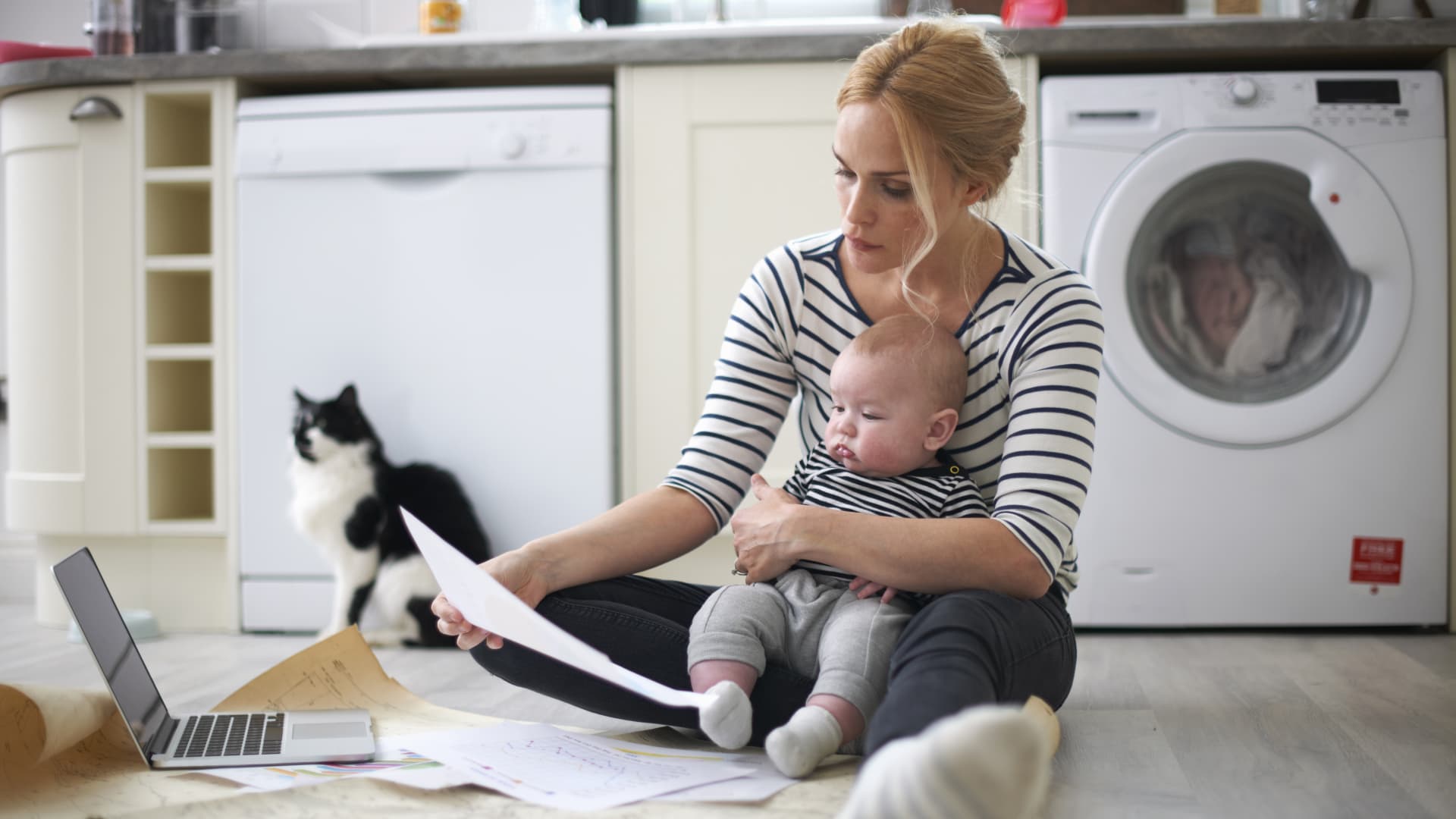Products You May Like
More women are becoming breadwinners, but the division of labor at home has barely budged, a new report found.
Although men still out-earn women in most households, the share of women who earn as much as or significantly more than their husband has roughly tripled over the last half-century, according to a new Pew Research Center survey and analysis of government data.
Today, 55% of opposite-sex marriages have a husband who is the primary or sole breadwinner, down from 85% 50 years ago, Pew found.
Now, both spouses earn about the same amount of money in nearly one-third, or 29%, of such marriages, up from only 11% in 1972.
And about 16% of opposite-sex marriages have a breadwinner wife, a jump from just 5% five decades ago, the analysis found.
Women are achieving increasing levels of education, making them more likely to out-earn their husbands, according to Richard Fry, a senior researcher at Pew.
But as women’s financial contributions increase, they still pick up a heavier load when it comes to household chores and caregiving responsibilities, the report also found.
“The reality is, the majority of traditional marriages still adhere to traditional gender roles,” said Stacy Francis, a certified financial planner and president and CEO of Francis Financial in New York. She is also a member of the CNBC Financial Advisor Council.
Age, race and family size also play a role, the Pew report found, with Black women, as well as older women and women without children, more likely to be the breadwinners.
Many studies show that women shoulder the brunt of the responsibilities at home, regardless of their financial contributions.
In marriages where husbands and wives earn about the same, women spend roughly 2 hours more a week on caregiving and about 2½ hours more on housework, according to the Pew data.
“Even though there may be more egalitarian marriages, their duties at home have not been equalized,” Fry said. “The gender imbalance in time spent on caregiving persists, even in marriages where wives are the breadwinners.”
The only exception is in marriages where the wife is the sole breadwinner, Pew found: In those marriages, husbands devote more time to caregiving. However, husbands and wives still spend roughly the same amount of time on household chores.
“Even there, it’s still the case that she does an equal amount of housework,” Fry said.
Eve Rodsky, author of “Fair Play,” said “this will not change on its own.”
Although there is no quick fix, there is a solution, she added. “Understand that it’s much more than meets the eye and tell your story,” Rodsky advised.
Francis said she also struggled with this early on in her marriage. “We had to have that conversation,” she said. Together, Francis and her spouse came up with a plan to tackle joint responsibilities at home and cover family expenses equitably. The key, she said, “is to talk about what’s working and what’s not working.”
